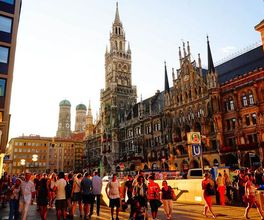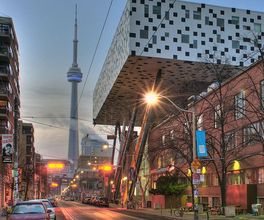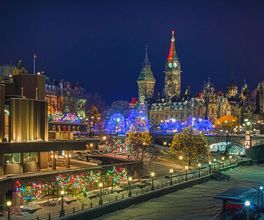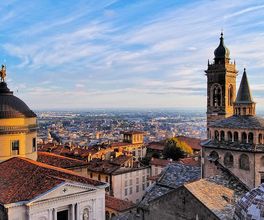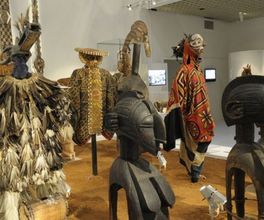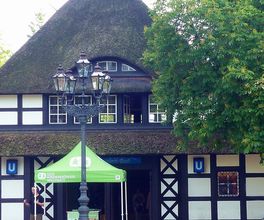




About this experience
The largest Francophone city in America, Montreal has long mastered the art of compromises to survive in an Anglophone environment. I will show you this Franco-English dialogue, tell you about original solutions and concepts, bold dreamers, the legendary hockey team, the symbolism of postcards, and much more!
I offer four options for walking tours in different areas of Montreal: downtown, Old Montreal, the English-speaking western part, and the historic Jewish quarter. Each lasts 3 hours.
Downtown Montreal. Hockey, the art of compromises, and jazz
Montreal Squares: history and traditions
At Canada Square, the site of all official events, near the monument to the first prime minister, I will tell you why it is guarded by Russian cannons from the Crimean War of the 19th century. On Dorchester Square, you will see a monument to the first French-speaking Prime Minister of Canada—a bright example of a truly Montreal phenomenon: French opposite English. At Festival Square, you will learn about the world-famous Jazz Festival held here and why Montreal is considered a city of modern dance. And at Arts Square, you will see six theaters and get acquainted with the curious history of Quebecois theatrical art.
Iconic hotels and historical train station
You will explore the unusual Windsor Station, built in the style of a medieval fortress, from where trains departed west to Vancouver. The clock on the church bell tower will remind you of time fraud and its participants. Nearby, behind the unassuming industrial facade, you will discover one of the most comfortable hotels in the world—the stylish Queen Elizabeth Hotel. How did it make its mark in Beatles music history? Let's discuss at the meeting. Additionally, I will show you Chateau Champlain Hotel—an amazing concrete building, constructed in a modern style and resembling a very utilitarian item.
Hockey history of Montreal
The program also includes Bell Arena, home to the oldest professional hockey team in the world (over 100 years old) and the most decorated: winner of 24 Stanley Cups. I will reveal the secret behind the name 'Canadiens de Montreal.' Even if you think everything here is very simple, it is not, and the name reflects the history of the former colony, first French and then English. You will learn how to decipher this on the tour. And at the 100th anniversary square of the team, you will see a monument with the names of all its members.
Amazing temples, vibrant places, and ingenious ideas
You will see an exact replica, one-third the size, of St. Peter's Cathedral in Rome—the Mary, Queen of the World Cathedral. It was built in the very center of Protestant Montreal, far from the Catholic, French-speaking parishioners. We'll discuss the reasons for this strange decision and what its architecture symbolizes. Also on the route is the Anglican Church of Christ—I will tell you how engineers saved the monument from sinking into the ground and the compromises the fathers of the abbey had to make. At Wilde House, a symbol of the French Catholic past, I will initiate you into the secrets of the symbolism of the Female Presence Fountain. Also at the meeting, you will learn how the ingenious engineering ideas of Leonardo da Vinci found expression in Montreal's underground city. Walking down the most shopping street of Saint Catherine, you will encounter the famous stores Birks and La Baie. And besides, you will see another church—Protestant Saint James.
Old Montreal. French beginnings, English continuation, modern present
The Unique Charm of Old Montreal
The tour begins at Notre-Dame Basilica, despite its fame; it is not a cathedral but a parish church, having earned the title for its contribution to Montreal's establishment. Let's talk about the church's history, the founders' monument, and all the buildings in the square. We'll walk to Rue de la Commune, where you'll see the St. Lawrence River—the main waterway that welcomed all travelers to the island. From the Old Port, you'll have a beautiful view of the Saint Helen's and Notre-Dame islands. At Royal Square, I will show you where Montreal began. And at the monuments to British Admiral Nelson and French naval officer Jean Vauquelin, we'll delve into Montreal's colorful 'French—English' tradition.
Inventiveness and entrepreneurship on the streets of Montreal
Walking down the main street of Old Montreal, Saint Paul, we'll reach the bustling Jacques Cartier Square with a multitude of restaurants and cafes. I'll share how entrepreneurs made a fortune in the early 19th century in developing this square. Bonsecours Market, resembling a theater or administrative building, doesn't fit the category of a produce market, but it was in the past. You will learn how it was reprofiled, preserving its commercial spirit. Near the sculpture group dedicated to the city's first teacher, you will appreciate the ingenuity of state managers in solving demographic problems. I'll also guide you to Saint-Jacques Street—the former Montreal Wall Street, where every building at the beginning of the 20th century housed a bank or insurance company.
Old Montreal in faces
I'll tell you how the restored Bonsecours Chapel on Bonsecours Street became the hero of one of the most beautiful songs about Montreal, created by the famous singer and musician Leonard Cohen. We'll reach Ramsay Castle on Notre-Dame Street, where Benjamin Franklin unsuccessfully tried to convince Montrealers to join the US side. The Montreal City Hall building will remind you of Charles de Gaulle's visit and the diplomatic scandal between Canada and France caused by his speech. The Cadillac Building name recalls that the legendary Frenchman had a house on the site and set out from here to explore new lands in North America. The building is named after the founder of Detroit, and that's why the Cadillac motor company was named in his honor.
Intellectual Montreal
Art Center and unexplored sculptures
At Norman Bethune Square, with a small statue of a doctor, you will hear about a Canadian with English roots who became a national hero of China. I will tell you many amazing things about this person: how he fought tuberculosis, battled fascists in Spain, and fought in Mao Zedong's brigades. We will admire the 'Di-Octo' sculpture, set in motion by the wind. At the Museum of Fine Arts of Montreal, you will discover its history, architecture, and new projects. I will also draw your attention to the residential building 'Le Chateau,' Canada's most expensive store 'Holt Renfrew,' the famous 'Ritz-Carlton' hotel, and the horse statue 'Kouros'—each has an interesting story behind its name.
English Montreal Universities
You will see the youngest of Montreal's four universities—Concordia University, known for its Molson School of Business. We'll walk along one of Montreal's most beautiful pedestrian streets and visit the McGill University campus. I will tell you about the oldest and most famous Canadian university, a constant in the top rankings. You will see several of its noteworthy buildings, such as the Chemical, Engineering, and Physical Sciences departments. The latter hosted Ernest Rutherford's atom-splitting experiments, for which he received the Nobel Prize. We'll leave the university grounds through Roddick Gate and walk along McGill College Avenue to the Richter Building, where you will discover the sculpture 'Crowded Crowd' and an astronomical project.
Saint-Laurent Boulevard—The history of Jews in Montreal
The History of the Quarter
Until the 1950s-60s, this was Montreal's Jewish quarter. Since 1905, Saint-Laurent Boulevard officially divided Montreal into 2 parts—eastern (French) and western (English). The center, Saint-Laurent, was the Jewish neighborhood. Jews received full civil and political rights in the province of Quebec (Lower Canada) in 1831, 27 years earlier than in Great Britain.
The Legendary Schwartz Restaurant
Our tour will start from the establishment where a huge line forms in any weather to taste the famous smoked meat. You will learn why Schwartz's meat is so delicious, that no official reception is complete without it, and tourists from different countries come just to try it. Additionally, you will discover how the restaurant made its mark in musical history: one of its owners was a graduate of the St. Petersburg Conservatory in violin and now one of the co-owners is Celine Dion.
The High School and Its Bright Graduates
Baron Byng's school could rival any elite school in the world. In the 1930s-60s, 90% of its students came from Jewish families. I will tell you about outstanding individuals who graduated from the school. Including Rudolf Marcus, a chemist and Nobel laureate, renowned cancer surgeon Phil Gold, actor William Shatner, known for playing Captain James T. Kirk in Star Trek, writer Mordecai Richler, whose novels have been translated into many languages, including Russian. Also, a graduate of the school was Fred Rose, who became a member of the Canadian Parliament for the Communist Party of Canada.
Synagogues and the Portuguese Influence in Montreal
On Clark Street, you will explore a unique synagogue that has not moved since the 1920s and is the only one left in the area. I will show you the popular Segal grocery store and the 'Montreal Jewish' Museum. On the facade of the Portuguese Association building, you will see Hebrew letters—it used to be a synagogue. In the 1960s, the Jewish population of this quarter moved to a more comfortable place on the west side of the island, and their buildings were taken over by immigrants from Portugal. Just a little later on the south side of Portugal Park, you will see the house where the famous singer and composer Leonard Cohen lived.
Symbols and Landmarks
We will walk along Esplanade Boulevard, near Jean-Mans Park, formerly Fletcher Field, the setting for Richler's story. Jewish aid organizations, such as an orphanage, homes for the elderly, immigrant reception organization, and public library, were located on the Esplanade. The sports center was housed in a specially built, spacious building with a pool, several workout rooms, meeting rooms. The current building has been converted into top-tier luxury housing. Opposite, you will encounter a drinking water fountain—a memorial to Louis Rubinstein, the first world champion in figure skating. You will hear about the prejudice Louis Rubinstein faced due to his nationality and the bias of the judges at the meeting. At the foot of Mount Royal, we'll stop at the George-Étienne Cartier Monument, one of the Fathers of Canadian Confederation, and visit a gazebo—a modest memorial to writer Mordecai Richler. From here, you have a view of the former Jewish quarter.
Excursion Format
- Internal visits to objects are not provided
- Conducting a tour on days not specified in the schedule should be discussed in the order's correspondence
